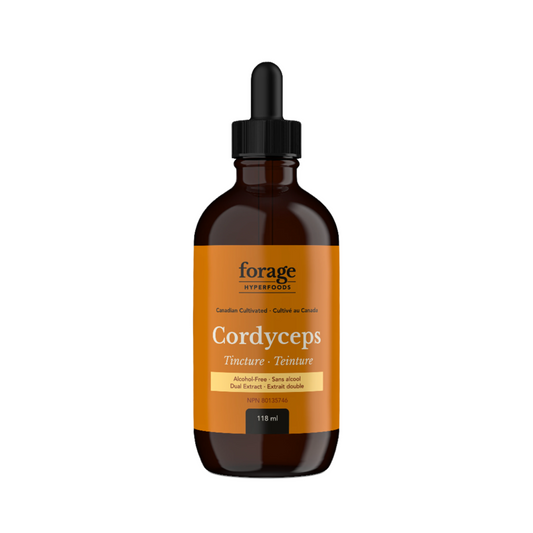
The Medicinal Mushroom Glossary
Share
Every specialty subject has its own jargon—language that is clear to those familiar with the subject and downright confusing to novices. The world of medicinal mushrooms is no exception. As you learn more about this subject, the terminology will become second nature, but until then, we created a glossary of must-know, mushroom-related words you can refer to.
Adaptogen: Herbs and fungi that have been shown to help the body manage physical and psychological stress. When consumed, the organic properties and compounds in adaptogens work to balance a person’s internal systems. Different fungi produce different adaptogenic effects, from anxiety reduction to immune support. Learn more about adaptogens here.
Beta-glucan: Soluble fibers found in the cell walls of certain bacteria, fungi, yeasts, algae, and some other plants like oats, barley, wheat, and rye. Beta-glucans offer significant benefits for the heart, immune system, gut, and blood sugar levels.
Bioactive compound: Nutrients and non-nutrients found in food that have a biological effect on the organism consuming them.
Bioavailable: The degree and rate at which a substance or compound is made available for physiological use after being introduced into the body.
Cap: The topmost part of a mushroom that gives the fungi its umbrella-like shape.
Extract: A preparation that results from taking raw plant material and applying a solvent to it, such as water or alcohol. The solvent causes the dissolvable compounds to be separated from the structural part of the plant.
Dual extract: An extraction method that uses both water and alcohol. With dual extraction, the fungal material is first extracted with either hot water or alcohol. Then, the remaining fungal material is extracted again with the other method.
Fruiting body: The above-ground parts of the mushroom, including the cap and stalk. The fruiting body is the reproductive structure of a fungus that contains spores. They come in many sizes, shapes, and colors, all of which aid in identifying specific fungi.
Functional mushroom: Types of fungi that produce health benefits extending beyond traditional mushrooms’ nutritional benefits. Learn more about functional mushrooms here.
Gills: The thin, papery structures that hang vertically under the cap. Similar to teeth and pores, gills are responsible for dispersing spores.
Hyphae: Long, thin, branch-like structures that protrude from the base of the fungus. An individual strand is called a hypha, while a mass of hyphae is called mycelium.
Medicinal mushrooms: Fungi used to prevent and alleviate health conditions and to balance a healthy diet.
Microbiome: The community of microorganisms, including bacteria, viruses, and fungi, that lives on and inside the body.
Mycelium: The network or root system of hyphae that lies underground below the fruiting body. The roots extend into the soil, plant matter, wood, and other materials to pick up water and nutrients that support the mushroom.
Mycobiome: The community of microscopic fungi that lives on and inside the body.
Mycology: The study of fungi, their relationships to each other and other organisms, and the unique biochemistry that sets them apart from other groups.
Pores: Tubular structures with pin-hole openings located under the cap of some mushrooms. Similar to teeth and gills, pores are responsible for producing and dispersing spores.
Sclerotia: A compact mass of hardened fungal mycelium containing food reserves. One role of sclerotia is to enable mushrooms to survive environmental extremes.
Spore: Microscopic particles that allow fungi to be reproduced, serving a similar purpose to that of seeds in the plant world.
Substrate: A material, such as straw or sawdust, that mushroom mycelium can grow and establish itself in. The substrate provides mushrooms with the nutrients, moisture, and energy they need to grow and fruit.
Teeth: Long, thin spines that hang vertically under the cap. Similar to pores and gills, teeth are responsible for producing and dispersing spores.
Tincture: A concentrated liquid extract made by dissolving fungal material in alcohol, water, or both.
Wild-harvested: If a mushroom is wild-harvested, it means it was picked in its natural habitat in nature. Learn why wild-harvested mushrooms are superior.



